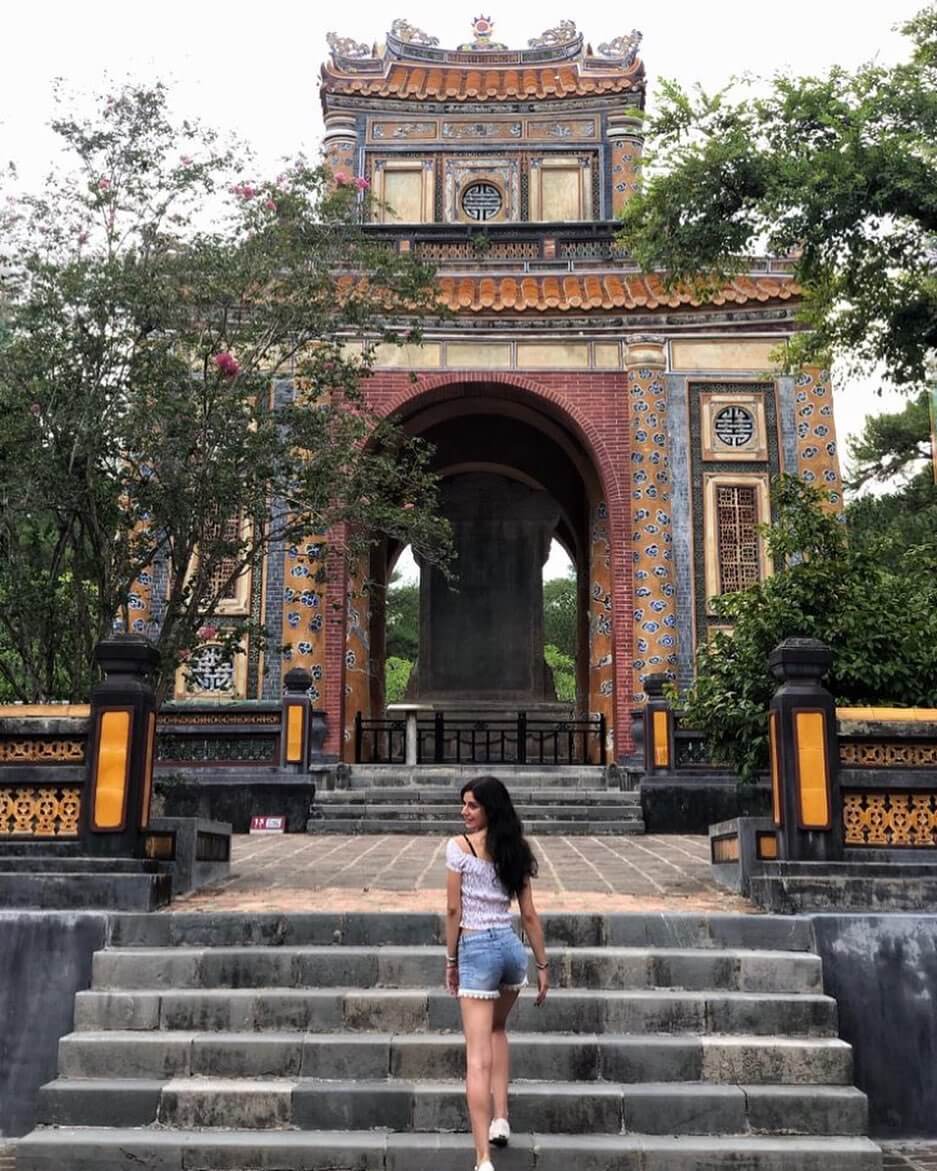As the burial place of three kings: King Duc Duc (father), King Thanh Thai (son) and King Duy Tan (grandson), Tomb of King Duc Duc or An Lang has an extremely simple, modest and simple architecture. weird.
The following article provides some information about Duc Duc Tomb of Hue , hopefully it will be useful for you in your exploration of Hue and the mausoleums here.

Where is Tu Duc Tomb?
Duc Duc Tomb, also known as An Lang, is the burial place of King Duc Duc, the 5th king of the Nguyen Dynasty. Duc Duc Tomb is a relic in the complex of Hue relics recognized by UNESCO as a world cultural heritage on December 11, 1993.
Address: The tomb area is currently in An Cuu ward, Hue city, less than 2 km from the city center.
How to get to Duc Duc Tomb?
Because it is located not far from the center of Hue city, moving to Duc Duc Tomb is relatively easy. From Ly Thuong Kiet Street, visitors go straight to Tran Phu, then turn to Duy Tan, visitors will see signposts to reach Duc Duc Tomb.
To move to Duc Duc Tomb, you can refer to: Tomb of King Duc Duc Google maps

History of Duc Duc Tomb
King Duc Duc’s real name is Nguyen Phuc Ung Chan, born in 1852. In 1883, he ascended the throne. But only 3 days later, he was disabled (July 23, 1883) and put under house arrest at Thai Y Vien, finally starving to death in Thua Thien prison after 7 days without food. The grave is temporarily buried at Phuoc Qua dune, near Tuong Quang pagoda.
In 1889, King Duc Duc’s son, Nguyen Phuc Buu Lan, was brought to the throne with the reign of Thanh Thai. After ascending the throne, Thanh Thai immediately built his father’s tomb properly and named it An Lang. The place of worship is Tuong Quang Pagoda, 200 meters away.
In 1891, the court of King Thanh Thai built a temple in Thuan Cat ward, near the right of the Imperial Citadel to worship King Duc Duc, named Tan Mieu.
In July of the 11th Thanh Thai year (August 1899), the king built Long An Palace near the tomb of King Duc Duc to worship his father. In this campus, a number of dependent houses were built, such as Ta, Huu Co, and Ta Huu.
At the end of 1945, right after King Duy Tan died in a plane crash in Africa, a memorial ceremony was held at Long An Palace and worshiped the king here. In 1954, when King Thanh Thai died, the body was brought back to be buried at the present site in An Lang area and worshiped at the Long An temple. In 1987, King Duy Tan’s remains were brought back to be buried next to Thanh Thai’s mausoleum.

Description of Duc Duc Tomb
The campus of the mausoleum is nearly 6 hectares wide, including the tomb of King Duc Duc, the queen and 42 tombs of royals and queens and 121 earthen tombs of people of the Fourth Chanh Nguyen Phuoc clan (the dharma system of King Duc Duc). In which, An Lang is located in the center and is 1 ha wide.
King Duc Duc named Nguyen Phuc Ung Ai (1852 – 1883) was only in office for 3 days before he was dismissed. Then Thanh Thai, the son of King Duc Duc, ascended the throne in 1889 as the 10th king of the Nguyen Dynasty, reigned until 1907, built An Lang for his father properly. Later, this mausoleum was also the burial place of King Thanh Thai and King Duy Tan (the 11th king).

Architecture of Duc Duc Tomb
Compared with other mausoleums of the Nguyen kings, Duc Duc’s mausoleum has a simpler and more modest architecture, in which there are about 20 large and small architectural works; divided into two areas: mausoleum and mausoleum, located more than 50 meters apart.
Enter the mausoleum area – 3,445m2 area by a rather large three-door gate built of bricks, on the false roof. Behind the door is Bai Dinh, there is no stone statue like other mausoleums, but only a balustrade made of brick and lime for decoration.
The center of the mausoleum is located right behind the second gate, with Huynh Oc house built on a square base of 8 meters each. The house is built like a communal house with the form of an ancient floor, roofed with royal lapis lazuli. The edge of the roof is decorated with dragons and phoenixes, and the interior is simply decorated.
The architectural works are located in the impregnated area with an area of 6,245m2. The main building is Long An Palace which is a dual building made in the style of Hue palace, with 6 sets of roof trusses in the 5 front houses which are structured in the style of “fake husband and wife”, decorated with very sophisticated tiger face. .
This is a wooden architectural work of artistic value in the system of architectural works of the Nguyen Dynasty in Hue.

Hue travel experience – Tomb of King Duc Duc
Duc Duc Tomb is open to visitors, so you can feel it’s not difficult to be fresh and peaceful there.
According to Hue travel experience, the most appropriate time to visit this place is in the first months of the year, the weather is cool and pleasant.
See More: Experience Duc Duc Tomb – Hue City Tour

